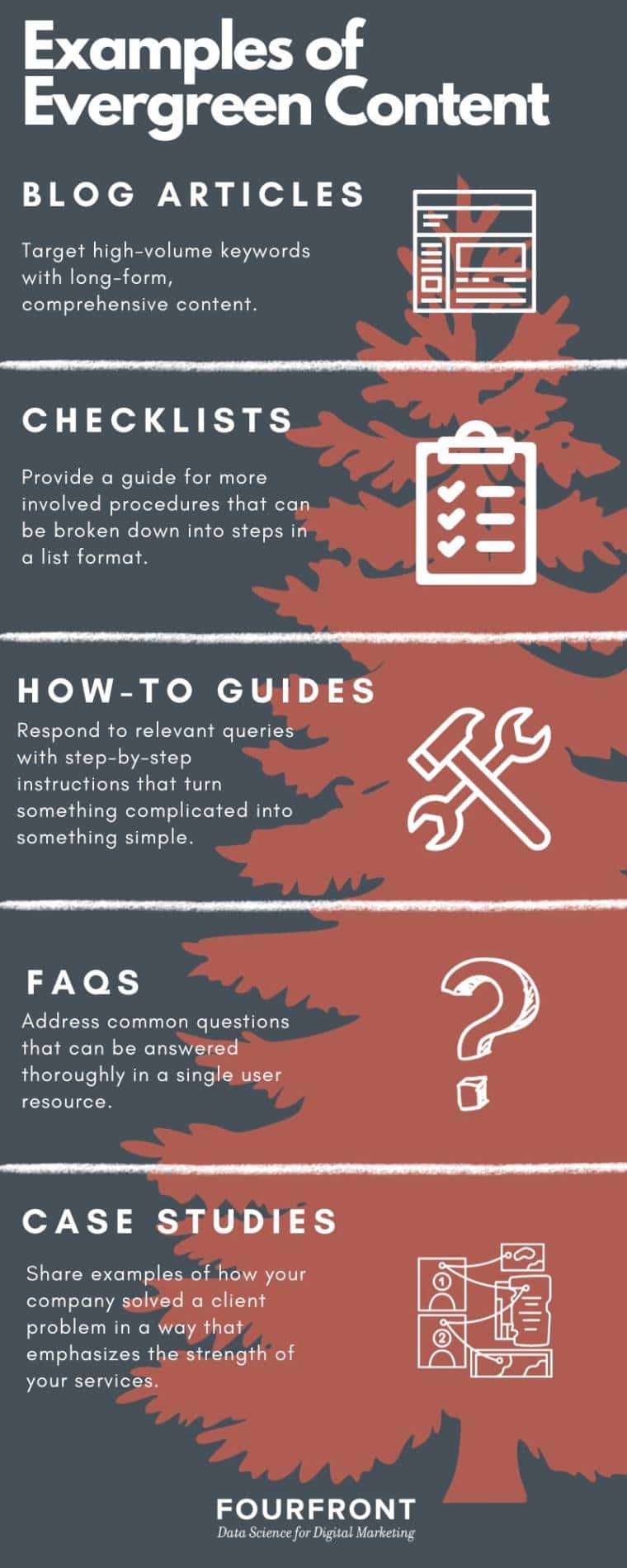Evergreen content is a vital part of any robust digital marketing strategy. There is certainly a time and place for time-sensitive responses to topics, especially as news comes in on industry updates and you want to stay on top of that, but if you are looking for sustained organic visibility over time, you need to be thinking about evergreen content.
For blog writers and digital marketing professionals, understanding and leveraging this type of content is a surefire approach to long-term benefits and sustained online presence.
What is Evergreen Content?
At its core, evergreen content is material that remains relevant, useful, and valuable to its intended audience over an extended period.
Unlike trending topics that capture a momentary interest, evergreen content is not time-sensitive and applies to your target audience indefinitely, providing consistent value. However, it’s important to recognize the role of trending material in a comprehensive content strategy.
While evergreen content ensures longevity, trending topics can capture immediate interest and drive short-term traffic.
Evergreen content is like a well-planted tree in your digital garden – it grows and strengthens over time, providing shade (value) for years. It’s an investment in content that pays off gradually but significantly, ensuring your digital presence remains robust and your audience engagement stays strong.
Examples of Evergreen Content
There are plenty of examples of great evergreen content, ranging across a diverse array of formats depending on the source material. Each type could serve a unique value to your user, and its your decision as to which format will apply best to your needs.

Blog Articles
Blog articles that tackle fundamental topics or answer common questions in your industry can remain relevant for years. For instance, our blog post on when to use subdomains and subdirectories continues to be a useful resource long after its initial publication.
Checklists
Checklists, such as the on-page SEO checklist from SEMRush offer timeless utility, guiding users through processes that remain largely unchanged over time.
How-to Guides
How-to guides provide step-by-step instructions on tasks that are always relevant. A guide on how to apply schema markup in WordPress remains valuable as long as that is a possible capability and schema markup has SEO value.
FAQs
FAQ sections addressing perennial questions about your industry or services, like the YouTube FAQ serve as evergreen resources for newcomers and seasoned professionals alike.
Case Studies
Case studies showcasing timeless strategies or success stories, such as how an SEO company recovers lost visibility for a client offer insights that remain applicable over time.
Getting Started: The Research Phase
1. Keyword Research
Begin by using keyword tools to identify potential evergreen topics. Identify keywords with high search volume but low competition, ensuring your content remains visible and relevant for longer periods.
One way to identify evergreen keywords over time-sensitive keywords is to examine the search volume trends. If a keyword has search volume that dates back years and has remained relatively consistent, that is a good example of an evergreen topic.
2. Audience Analysis
Understand your audience’s enduring needs and interests. Evergreen content should resonate with these long-term needs, ensuring it remains valuable over time.
3. Industry Trends
While focusing on timelessness, align your content with ongoing industry trends. This balance ensures your content stays relevant without losing its evergreen quality.
Tips for the Evergreen Writing Process
1. Compelling Headlines
Craft headlines that are enticing yet timeless. Aim for a blend of curiosity and relevance, ensuring your content attracts immediate attention and remains engaging over time.
2. Comprehensive Content
Dive deep into your chosen topics. Provide thorough coverage and substantial value. For example, creating cornerstone content on ‘The Complete Guide to Content Marketing’ can serve as a comprehensive resource for years.
3. Timeless Language
Use language and phrases that won’t become outdated quickly. Avoid trendy slang and focus on clear, straightforward expression to ensure lasting relevance.
4. Regular Updates
Periodically review and update your evergreen content. This keeps it current and authoritative, maintaining its value amidst industry changes.
Frequently Asked Questions
What is evergreen content?
Evergreen content is material that maintains its relevance and value over an extended period, unlike trending topics that have a temporary interest spike.
What are some examples of evergreen content?
Evergreen content can exist in many different formats, such as how-to guides, FAQs, checklists, blog articles, and case studies.
How can you post evergreen content on social media and YouTube?
On various social media platforms, including YouTube, evergreen content often includes tutorials, educational videos, and timeless advice. While much of social media is time-sensitive, there is certainly a place for evergreen content. This is particularly true on YouTube, where users interact with the medium like a search engine and often watch older videos if they are still relevant to their needs.
Why is evergreen content important?
Evergreen content provides long-term value, drives consistent traffic, and builds authority in your field. Time-sensitive content will, by its nature, only provide search visibility in the short-term while it is still relevant. If you are looking to expand your visibility and trend in the positive direction over time, you will need to build a collection of evergreen materials that will consistently drive traffic to your site.
What is evergreen vs. non- evergreen content?
Evergreen content remains relevant over time, whereas non-evergreen content is typically time-sensitive and tied to specific events or trends.









